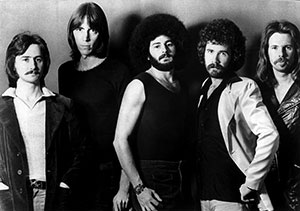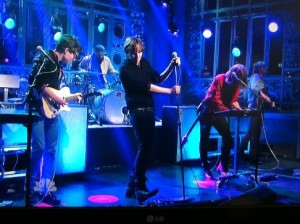 I found something amazing on YouTube yesterday. Someone posted the audio (no actual video, just a static picture) of ONLY the lead vocal tracks from the 1976 Boston hit, “More Than a Feeling.” I’ve have always been a huge fan of lead vocalist Brad Delp (may he rest in peace), and to be able to hear what he sounded like without all the music on a song I’ve known most of my life is a real treat.
I found something amazing on YouTube yesterday. Someone posted the audio (no actual video, just a static picture) of ONLY the lead vocal tracks from the 1976 Boston hit, “More Than a Feeling.” I’ve have always been a huge fan of lead vocalist Brad Delp (may he rest in peace), and to be able to hear what he sounded like without all the music on a song I’ve known most of my life is a real treat.
But the thing I wanted to point out was the sound of a “doubled” lead vocal. I talk a lot about vocal doubling in both of our courses, “The Newbies Guide to Audio Recording Awesomeness 1 and 2.” It was pioneered in pop music by the likes of Les Paul and Buddy Holly as a means of making a single voice sound richer and “thicker.” It was also something the Beatles did a lot in the studio, to the point that an actual process was developed by Apple Engineer Ken Townsend at the request of “the lads” so they didn’t have to actually sing a part twice. (Trying to match the timing of the original track can be time-consuming.) That new process was called automatic double tracking, or ADT for short. I still think the original method of just singing a second track along to the first track – singing the lead vocal part twice – is a great (not to mention cheap :)) way to double a vocal part.
In the video below, you can hear what vocal doubling sounds like on Brad Delp’s voice. The recording also has the harmony parts on it, and those are not what I’m talking about; I am referring only to the “apparent” sound of Brad’s voice singing alone on the verses without the harmony – for example, “I woke up this morning and the sun was gone,” etc.
I cannot say with absolute certainty whether this recording was made by having Brad sing twice or if it was done via a doubling effect, but IF I had to guess, I’d bet he sang twice. He was used to singing along with his own voice, since all those harmony parts were also sung by Brad Delp. You didn’t think Boston had that many actual singers did you? :). Actually, they would sometimes hire extra singers to sing the harmonies in the live shows.
Without further ado from me, listen for yourself below:
double-tracking
Phoenix on Saturday Night Live – Double-Tracking The Lead Vocal
 Did you notice the sound of the lead vocalist, Thomas Mars, on Saturday Night Live (April 6th, 2013)? That is the sound of double-tracking, or since it was a live performance, it would just be called “vocal doubling.”
Did you notice the sound of the lead vocalist, Thomas Mars, on Saturday Night Live (April 6th, 2013)? That is the sound of double-tracking, or since it was a live performance, it would just be called “vocal doubling.”
Double-tracking a lead vocal is a really common technique used mostly in recording. You probably never heard a Beatles song without it. But when performing live, it’s much less common.
There are two primary ways to get the sound of a double-tracked vocal. You can either have the lead singer actually sing the part twice, which is actually more common these days when recording (obviously impossible live, at least without some creative vocal surgery;)). Or you can do it electronically with an effect box. The Beatles actually started with the singing-the-part-twice method, then moved to an automated way to do it (artificial double tracking – ADT), since John Lennon did not like singing his part twice, or so the story goes. See my article What The Beatles Can Teach Us About Mixing Music for more on this.
The reason for even doing the double-tracking thing is to create a nice, thick sort of chorus-y sound on the voice. That sound is very distinctive once you know what to listen for. And I most definitely heard it from Thomas Mars last night. It could have been the automated effect being used. But there may have also been an actual recorded version of the lead vocal coming over the PA that Thomas Mars sang along with to create the effect. I have no evidence one way or the other. However, as you can see in the picture above, Thomas had a bank of effect pedals that he is stepping on, which I strongly suspect were for chorusing and/or double-tracking. But even if he did have a pre-recorded version to sing along with, I need to point out that this is NOT the same thing as lip-syncing, where the recording is all the audience hears while the singer fakes the actual singing. With double-tracking, you actually hear the live vocal as the singer sings. It’s just that it is augmented by a recorded version as well.
Either way, I have no problem with it at all as long as the performer is actually performing live.
So if you didn’t know what double-tracking sounded like, now you do. And if you need to thicken up the sound of a lead vocal, you know how to do it.
There are tutorials on double-tracking in our home recording course, The Newbies Guide To Audio Recording Awesomeness.